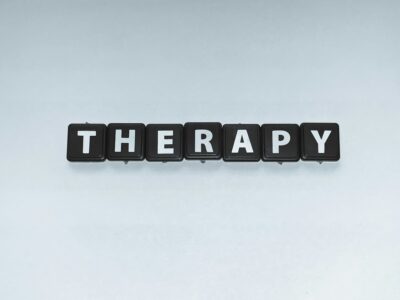Negative thinking patterns can trap us in cycles of self-doubt, anxiety, and depression, making everyday challenges feel overwhelming and insurmountable. When our minds automatically jump to worst-case scenarios or focus on perceived failures, it becomes difficult to see situations clearly and respond effectively. Fortunately, Cognitive Behavioral Therapy (CBT) offers proven techniques to help break these destructive thought patterns. CBT exercises for negative thinking provide practical, evidence-based tools that can help you identify, challenge, and transform the way you think about yourself and the world around you.
These therapeutic techniques are grounded in decades of research and have helped millions of people develop healthier thinking patterns. By learning to recognize negative thought distortions and applying specific exercises, you can gradually rewire your brain’s automatic responses and develop a more balanced, realistic perspective. The beauty of CBT exercises lies in their accessibility – you don’t need special equipment or extensive training to begin implementing these strategies in your daily life.
Understanding Negative Thought Patterns
Before diving into specific exercises, it’s crucial to understand how negative thinking patterns develop and persist. Our brains are naturally wired to notice potential threats and problems as a survival mechanism, but sometimes this protective system becomes overactive. When we consistently interpret neutral or even positive situations through a negative lens, we create what psychologists call “cognitive distortions” – systematic errors in thinking that reinforce feelings of sadness, anxiety, or hopelessness.
Common negative thought patterns include all-or-nothing thinking, where situations are viewed in black and white terms with no middle ground. Catastrophizing is another frequent pattern, where we automatically assume the worst possible outcome will occur. Mental filtering involves focusing exclusively on negative details while ignoring positive aspects of a situation. Personalization leads us to blame ourselves for events outside our control, while mind reading involves assuming we know what others are thinking about us, usually something negative.
These patterns often operate automatically, below our conscious awareness, which is why they can be so persistent and difficult to change without intentional intervention. The first step in addressing negative thinking is developing awareness of these patterns as they occur in real-time.
The Power of Thought Records
One of the most fundamental CBT exercises for negative thinking is the thought record, a structured method for examining and challenging problematic thoughts. This exercise helps you step back from emotional reactions and analyze situations more objectively. A typical thought record involves identifying the specific situation that triggered negative emotions, noting the automatic thoughts that arose, recognizing the emotions you experienced, and then examining the evidence for and against these thoughts.
To create an effective thought record, start by writing down the exact situation that occurred, being as specific as possible. Next, identify the negative thoughts that went through your mind, writing them down word-for-word if you can remember them. Rate the intensity of your emotions on a scale from 1 to 10, and identify what specific emotions you experienced – was it anxiety, sadness, anger, or shame?
The most crucial part of the thought record involves examining the evidence. Ask yourself: “What evidence do I have that this thought is true? What evidence suggests it might not be completely accurate?” This process helps you move beyond emotional reactions to a more balanced evaluation of the situation. Finally, work on developing a more balanced thought that takes all the evidence into account, and notice how this affects your emotional intensity.
Making Thought Records a Daily Practice
For thought records to be most effective, consistency is key. Many people find it helpful to set aside time each evening to review their day and identify moments when negative thinking occurred. Initially, you might only catch these thoughts hours after they happen, but with practice, you’ll become more skilled at recognizing them in real-time and applying the thought record process mentally throughout your day.
Essential CBT Exercises for Negative Thinking Patterns
Thought Record Technique
One of the most fundamental CBT exercises for negative thinking involves creating detailed thought records. This technique requires you to document triggering situations, identify the specific negative thoughts that arise, and examine the emotions and physical sensations that follow. For example, if you find yourself thinking “I’m terrible at my job” after receiving feedback, you would write down the situation, rate the intensity of your emotional response, and then challenge this thought with evidence-based questioning.
The thought record process typically includes five columns: situation, mood, automatic thought, evidence for and against the thought, and a balanced alternative thought. This systematic approach helps you recognize patterns in your thinking and develop more realistic perspectives over time.
Cognitive Restructuring Through Evidence Examination
Another powerful approach among CBT exercises for negative thinking is evidence examination. This involves becoming a detective of your own thoughts, actively seeking proof that supports or contradicts your negative assumptions. When you catch yourself thinking “Everyone thinks I’m boring,” you would list concrete evidence for this belief versus evidence against it.
Most people discover that their negative thoughts are based on assumptions rather than facts. You might realize that several friends regularly invite you to social events, colleagues seek your input during meetings, or family members enjoy spending time with you. This evidence-gathering process gradually weakens the grip of automatic negative thoughts.
The Downward Arrow Technique
This technique helps uncover core beliefs behind surface-level negative thoughts. Start with a negative thought and keep asking “What would that mean about me?” or “What would be so bad about that?” For instance, if you think “I might fail this presentation,” ask what failure would mean to you. You might discover deeper fears about being judged, losing respect, or confirming beliefs about your inadequacy.
Understanding these underlying beliefs is crucial because surface-level CBT exercises for negative thinking become more effective when you address the root causes of your thought patterns.
Behavioral Experiments
Sometimes the most effective way to challenge negative thoughts is through real-world testing. If you believe “I’ll embarrass myself if I speak up in meetings,” design a small experiment where you make one brief comment in your next meeting. These behavioral experiments provide concrete evidence about the accuracy of your predictions and help build confidence in challenging situations.
Many people find that their feared outcomes rarely materialize, or when they do occur, the consequences are far less severe than anticipated. This real-world evidence becomes powerful ammunition against future negative thought spirals.
Developing Alternative Perspectives
After identifying and examining negative thoughts, the next step involves generating more balanced, realistic alternatives. Instead of “I always mess everything up,” you might develop thoughts like “I sometimes make mistakes, but I also handle many things well” or “Making errors is part of learning and growing.”
These alternative thoughts aren’t forced positive thinking but rather more accurate representations of reality that account for both challenges and strengths. Practicing this skill regularly helps create new neural pathways that support healthier thinking patterns.
For those seeking additional support in implementing these techniques, digital platforms can provide structured guidance and practice opportunities. Try Aitherapy now to explore interactive tools that can complement your CBT practice and provide personalized exercises tailored to your specific thought patterns.
Building Long-Term Success with CBT Techniques
The journey of implementing CBT exercises for negative thinking requires consistency and patience. These techniques work best when practiced regularly, not just during moments of distress. Consider setting aside 10-15 minutes daily to review your thought patterns, complete thought records, or practice cognitive restructuring. This proactive approach helps strengthen your mental resilience before challenging situations arise.
Remember that changing deeply ingrained thought patterns is a gradual process. You may not notice immediate dramatic shifts, but small improvements compound over time. Many people report that after several weeks of consistent practice, they begin to catch negative thoughts more quickly and challenge them almost automatically.
Creating Your Personal CBT Toolkit
As you experiment with different CBT exercises for negative thinking, you’ll likely discover that certain techniques resonate more strongly with your learning style and specific challenges. Some people find thought records most helpful, while others prefer behavioral experiments or evidence examination. Build a personalized toolkit of your most effective strategies.
Keep a journal or digital notes of which techniques work best in different situations. For example, evidence examination might be most effective for social anxiety, while behavioral experiments could be ideal for performance-related fears. This personalized approach ensures you have targeted strategies ready when negative thought patterns emerge.
When to Seek Additional Support
While self-guided CBT exercises can be remarkably effective, some situations benefit from professional guidance. If negative thinking patterns severely impact your daily functioning, work performance, or relationships, consider working with a licensed therapist trained in CBT approaches. They can provide personalized strategies and help you navigate more complex underlying issues.
Additionally, if you’re dealing with persistent depression, anxiety disorders, or trauma-related thoughts, professional support ensures you receive appropriate care tailored to your specific needs.
Taking the Next Step Forward
Transforming negative thinking patterns through CBT exercises represents one of the most empowering steps you can take for your mental health. These evidence-based techniques provide practical tools that work in real-world situations, helping you develop greater emotional resilience and a more balanced perspective on life’s challenges.
Start small by choosing one or two techniques that feel manageable, then gradually expand your practice as these skills become more natural. Whether you begin with thought records, evidence examination, or behavioral experiments, the key is consistent application and patience with yourself as you develop these new mental habits.
For structured guidance in your CBT journey, digital platforms can offer valuable support and interactive practice opportunities. Try Aitherapy now to access personalized exercises and track your progress as you work on transforming negative thought patterns into more balanced, realistic perspectives.
References
Beck, J. S. (2011). Cognitive behavior therapy: Basics and beyond (2nd ed.). Guilford Press.
Greenberger, D., & Padesky, C. A. (2015). Mind over mood: Change how you feel by changing the way you think (2nd ed.). Guilford Press.
National Institute of Mental Health. (2022). Psychotherapies. Retrieved from https://www.nimh.nih.gov/health/topics/psychotherapies
Wright, J. H., Brown, G. K., Thase, M. E., & Basco, M. R. (2017). Learning cognitive-behavior therapy: An illustrated guide (2nd ed.). American Psychiatric Publishing.
![$input.first().json.photos[2].photographer_url](https://images.unsplash.com/photo-1705056509092-5d7b1a789eeb?crop=entropy&cs=tinysrgb&fit=max&fm=jpg&ixid=M3w4MDk5MjJ8MHwxfHNlYXJjaHwzfHxDb2duaXRpdmUlMjBCZWhhdmlvcmFsJTIwVGhlcmFweXxlbnwwfHx8fDE3NjAwNDcyNTd8MA&ixlib=rb-4.1.0&q=80&w=1080)


